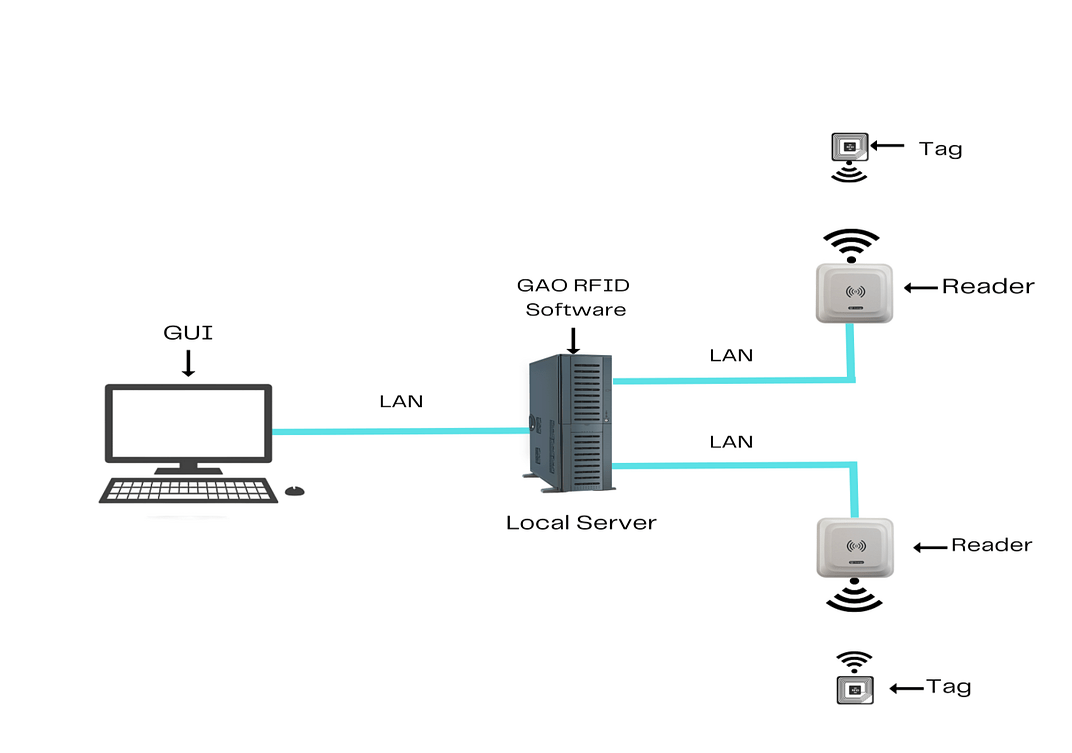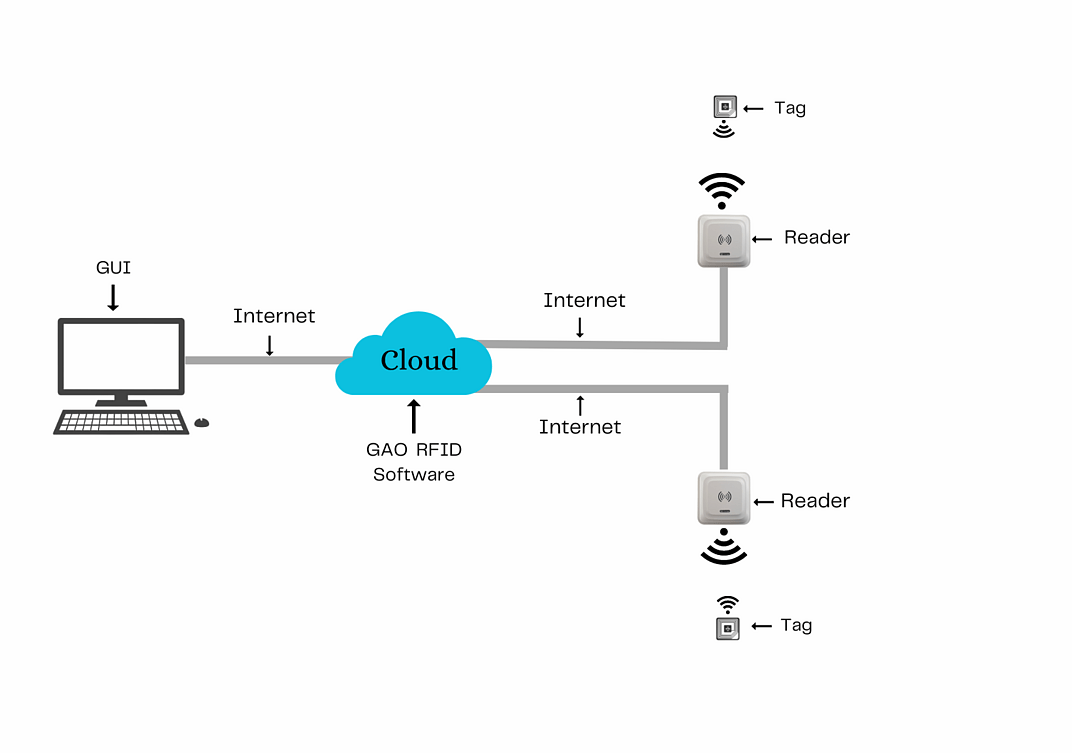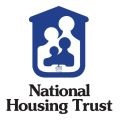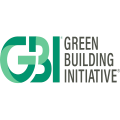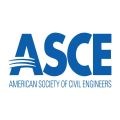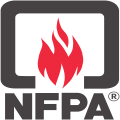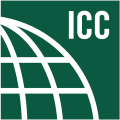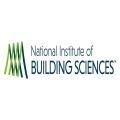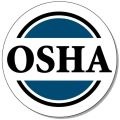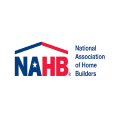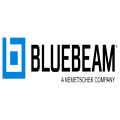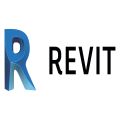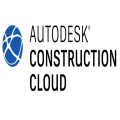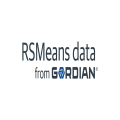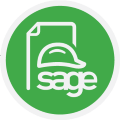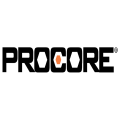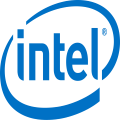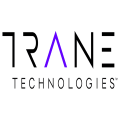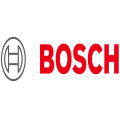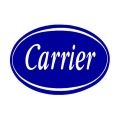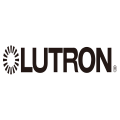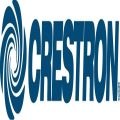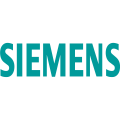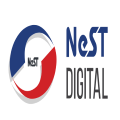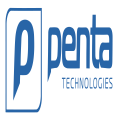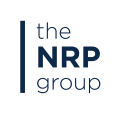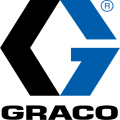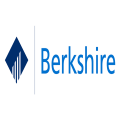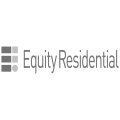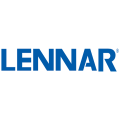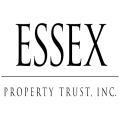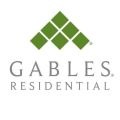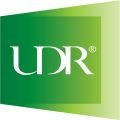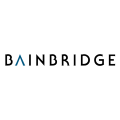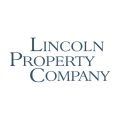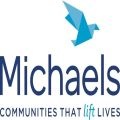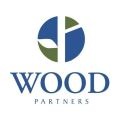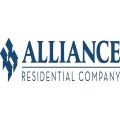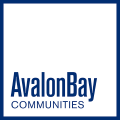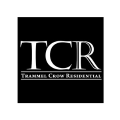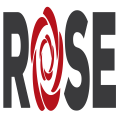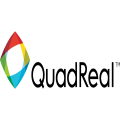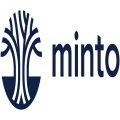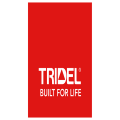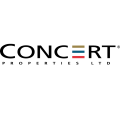Index:
Applications & Benefits of GAO’s RFID, BLE, IoT & Drones for the Multi-Family Home Construction
GAO Software Provides Easy Integration with API
Case Studies of RFID Applications
GAO RFID Systems & Hardware for the Multi-Family Home Construction
GAO Has Served the Multi-Family Home Construction Extensively
Overview
The multi-family home construction industry involves the design, construction, and sale or rental of residential buildings that contain multiple units, typically intended for occupancy by separate households or families. This includes apartment buildings, townhouses, and condominiums, among other multi-family dwellings. The industry is influenced by various factors, such as population growth, urbanization, zoning regulations, and economic conditions, and is typically driven by demand for affordable housing and lifestyle preferences.
GAO’s RFID, BLE, IoT, and drone technologies have helped its customers in the multi-family home construction industry to improve their work processes, their operations, and productivity through better management of their staff, materials, and operational equipment such as excavators, backhoes, bulldozers, loaders, cranes, concrete mixers, scaffolding, power tools, air compressors, and generators.
Ranked as a top 10 global RFID supplier and based in New York City and Toronto, GAO RFID Inc offers a wide choice of RFID (radio frequency identification) readers and tags at an ultra-high frequency (UHF), high frequency (HF, including NFC) and low frequency (LF), BLE (Low Energy Bluetooth) gateways and beacons, and various RFID and BLE systems such as people tracking, asset tracking, access control, parking control, fleet management, WIP (work in progress), traceability. Such RFID, BLE products, systems, and IoT and drone technologies have been widely used in multi-family home construction.
To satisfy its customers, GAO’s RFID or RFID Systems for the multi-family home construction industry are offered in 2 versions. One version is that its software is running on a local server, and another version is that its software runs in the cloud. The above illustrates GAO system for the multi-family home construction industry with its software running on a local server.
The above illustrates the GAO system for the multi-family home construction industry with its software running in the cloud.
GAO’s RFID technologies bring many benefits to the multi-family home construction industry:
- Improved inventory management: GAO’s RFID can enable real-time tracking and monitoring of construction materials, tools, and equipment, allowing for more accurate and efficient inventory management.
- Enhanced safety and security: Our RFID can be used to monitor and control access to construction sites and buildings, ensuring that only authorized personnel are allowed entry, which can reduce the risk of theft, vandalism, and accidents.
- Streamlined construction processes: GAO RFID can automate many construction processes, such as tracking material shipments, scheduling deliveries, and managing work orders, which can help streamline operations and improve project timelines.
- Increased transparency and accountability: GAO’s RFID can provide a detailed record of the movement and use of materials, tools, and equipment, which can increase transparency and accountability throughout the construction process.
- Reduced labor costs: Our RFID can help reduce labor costs associated with manual inventory tracking and management, allowing workers to focus on more critical tasks.
- Improved customer experience: GAO RFID can enable builders and property managers to track and manage the maintenance and repair of multi-family properties, ensuring that tenants are satisfied with the quality of their living environment.
GAO’s BLE technologies offer a longer reading range and are particularly attractive for applications with larger workspaces within the multi-family home construction industry:
- Asset tracking: Our BLE can be used to track the location and status of construction materials, tools, and equipment, allowing builders to monitor inventory and improve productivity.
- Improved safety: GAO’s BLE can enable the automatic detection of falls or accidents on construction sites, allowing for rapid response and assistance.
- Contact tracing: GAO BLE can be used to implement contact tracing protocols on construction sites to minimize the risk of COVID-19 transmission and other infectious diseases.
- Energy efficiency: GAO’s BLE can enable smart home technologies that optimize energy usage, such as automatically turning off lights and appliances when not in use, reducing energy costs for property owners and tenants.
- Improved tenant experience: Our BLE can be used to provide tenants with convenient access to building amenities, such as fitness centers, pools, and laundry facilities, using their smartphones.
- Enhanced security: GAO’s BLE can be used to control access to multi-family properties and individual units, providing a secure and convenient alternative to traditional keys and locks.
GAO’s RFID and drone technologies are often combined and such solutions offer the following benefits to the multi-family home construction industry:
- Real-time inventory tracking: GAO’s RFID can be used to track construction materials, tools, and equipment, while drones can be used to conduct aerial surveys and monitor inventory levels in real time, providing builders with up-to-date information about project progress and inventory needs.
- Improved safety: GAO’s RFID and drones can be used to inspect hard-to-reach or dangerous areas of construction sites, such as rooftops and high-rise buildings, reducing the risk of accidents and injuries for workers.
- Increased efficiency: GAO’s RFID and drone technologies can automate many construction processes, such as inventory tracking, site inspections, and project monitoring, improving operational efficiency and reducing labor costs.
- Enhanced data collection: Drones can capture high-resolution images and videos of construction sites, while RFID can provide detailed information about the movement and use of construction materials, enabling builders to make data-driven decisions and optimize construction processes.
- Improved project planning: RFID and drone technologies can be used to create 3D models of construction sites and buildings, enabling builders to plan and design projects more accurately and efficiently.
- Environmental monitoring: Drones can be equipped with our sensors to monitor environmental factors, such as air quality and noise levels, which can help builders comply with regulations and minimize the impact of construction on the surrounding community.
Here are the benefits of GAO’s IoT technologies to the multi-family home construction industry:
- Remote monitoring: GAO’s IoT devices can be used to remotely monitor construction sites and buildings, enabling builders and property managers to track inventory, energy usage, and environmental conditions in real time.
- Energy efficiency: Our IoT devices can be used to optimize energy usage in multi-family properties, such as automatically adjusting heating and cooling systems based on occupancy levels and weather conditions, reducing energy costs and environmental impact.
- Improved safety: GAO’s IoT devices can be used to monitor and detect potential hazards, such as gas leaks, fires, and water damage, allowing for rapid response and intervention.
- Enhanced tenant experience: GAO’s IoT devices can be used to provide tenants with convenient access to building amenities, such as smart home technologies and shared spaces, improving their overall living experience.
- Predictive maintenance: Our IoT devices can be used to monitor equipment and systems in multi-family properties, predicting and preventing potential failures before they occur, reducing maintenance costs and downtime.
- Improved security: GAO’s IoT devices can be used to control access to buildings and units, as well as to monitor and detect suspicious activity, improving the overall security and safety of the property.
GAO’s Assists Clients with Standards, Mandates & Regulations of the Multi-Family Home Construction
GAO RFID Inc. has developed its products and systems in compliance with industry standards and mandates. GAO has assisted our customers in multi-family home construction to deploy RFID, BLE, IoT, and drone systems and to ensure such deployments comply with applicable industry standards, U.S. government regulations, and Canadian government regulations such as:
RFID, BLE, IoT, & Drone Standards & Mandates
There are several RFID standards that may be relevant to the multi-family home construction industry in the USA and Canada, including:
- ANSI/INCITS 256-2017: This is an American National Standard for RFID tag data format and encoding, which provides guidelines for encoding data on RFID tags and for interoperability between different RFID systems.
- ASTM E53: This is a standard specification for identifying specific elements of a building or construction project, including materials, systems, and components, which can be used in combination with RFID for inventory tracking and asset management.
- AIA/CCS SPEC-2000: This is a standard developed by the Construction Specifications Institute (CSI) for exchanging information between different construction-related software systems, which can include RFID data for inventory tracking and asset management.
- Open Connectivity Foundation (OCF): This is an open-source standard for IoT interoperability, which provides a common framework for connecting and controlling different devices and systems in a seamless and secure way. The OCF standard can be used in the multi-family home construction industry to enable interoperability between different IoT devices and systems, such as smart home technologies, security systems, and energy management systems.
- ASTM F38-16: This is a standard for the design, construction, and operation of unmanned aircraft systems (UAS), which includes safety guidelines for drone flights in different environments and applications.
- Transport Canada Regulations: This is a set of regulations for the operation of drones in Canada, which includes guidelines for drone flights in urban and rural areas, as well as for commercial and recreational purposes.
- FAA Part 107: This is a set of regulations for the operation of drones in the USA, which includes guidelines for drone flights in different environments and applications, as well as for commercial and recreational purposes.
- ANSI/ASSP RP23.1-2019: This is a standard for the safe use of drones in the construction industry, which includes guidelines for the selection, operation, and maintenance of drones for different applications.
US. Government Regulations
The US government has several regulations related to the multi-family home construction industry, including:
- Building codes and standards: The US government sets minimum standards for building design, construction, and safety through the International Building Code (IBC), International Residential Code (IRC), and other standards developed by the National Fire Protection Association (NFPA), American Society of Heating, Refrigerating and Air-Conditioning Engineers (ASHRAE), and other organizations.
- Occupational Safety and Health Administration (OSHA): OSHA regulates workplace safety standards in the construction industry, including requirements for protective equipment, fall protection, and hazard communication.
- Environmental Protection Agency (EPA): The EPA regulates environmental standards related to the construction industry, including requirements for air and water quality, lead-based paint, and asbestos.
- Fair Housing Act: The Fair Housing Act prohibits discrimination in the sale, rental, and financing of housing based on race, color, national origin, religion, sex, familial status, or disability.
- Americans with Disabilities Act (ADA): The ADA requires multi-family homes to be accessible to people with disabilities, including requirements for door width, ramp slope, and accessible bathroom and kitchen fixtures.
- Tax code: The US tax code provides tax incentives for energy-efficient construction and renovation, including the Energy Policy Act of 2005 and the American Recovery and Reinvestment Act of 2009.
Canadian Government Regulations
The Canadian government has several regulations related to the multi-family home construction industry, including:
- Building codes and standards: The Canadian government sets minimum standards for building design, construction, and safety through the National Building Code of Canada (NBC), Canadian Electrical Code (CEC), Canadian Plumbing Code (CPC), and other standards developed by the Canadian Commission on Building and Fire Codes and other organizations.
- Workplace Safety and Health: The Canadian Centre for Occupational Health and Safety (CCOHS) regulates workplace safety standards in the construction industry, including requirements for protective equipment, fall protection, and hazard communication.
- Environmental regulations: The Canadian government regulates environmental standards related to the construction industry, including requirements for air and water quality, hazardous waste management, and pollution prevention.
- Canadian Human Rights Act: The Canadian Human Rights Act prohibits discrimination in the sale, rental, and financing of housing based on race, national or ethnic origin, color, religion, age, sex, sexual orientation, marital status, family status, disability, or conviction for an offense for which a pardon has been granted.
- Accessibility regulations: The Canadian government has accessibility regulations for multi-family homes that are similar to the Americans with Disabilities Act (ADA) in the US. The Accessible Canada Act sets out accessibility requirements for buildings, including requirements for door width, ramp slope, and accessible bathroom and kitchen fixtures.
- Tax incentives: The Canadian government provides tax incentives for energy-efficient construction and renovation, including the Energy Efficiency Act and the Green Building Incentive Program.
GAO Software Provides Easy Integration with API
GAO’s RFID and BLE software offers a free trial for both the server-based and cloud versions, and offers an API to the important systems in the multi-family home construction industry such as:
Personnel Management
- Applicant Tracking System (ATS) for recruitment and hiring
- Time and Attendance System for tracking employee hours worked
- Learning Management System (LMS) for employee training and development
- Performance Management System for setting goals, conducting evaluations, and providing feedback
- Payroll Management System for tracking employee compensation and benefits
- Employee Engagement Surveys for measuring employee satisfaction and identifying areas for improvement
- Safety Management System for ensuring compliance with safety regulations and reducing workplace accidents
Equipment Management
- Asset Tracking System for managing construction equipment and tools
- Maintenance Management System for scheduling and tracking equipment maintenance
- Fuel Management System for monitoring fuel usage and costs
- GPS Tracking System for tracking the location of construction equipment and vehicles
Access Control
- Biometric Access Control System for restricting access to construction sites and controlling entry and exit points
- Visitor Management System for tracking visitors and contractors on construction sites
- CCTV Surveillance System for monitoring construction sites and deterring theft and vandalism
Warehouse Management
- Inventory Management System for tracking building materials and supplies
- Barcode Scanning System for fast and accurate inventory tracking
- Warehouse Management System for optimizing warehouse operations and reducing waste
Supply Chain Management
- Procurement Management System for sourcing and purchasing building materials and supplies
- Vendor Management System for managing relationships with suppliers and subcontractors
- Logistics Management System for coordinating the movement of materials and equipment to and from construction sites
Other Applications
- Project Management System for planning, executing, and monitoring construction projects
- Building Information Modeling (BIM) for creating digital models of building designs
- Quality Management System for ensuring that construction projects meet quality standards and regulations
GAO has integrated its RFID, BLE, IoT and drone systems with some of leading software and cloud services in the multi-family home construction industry. Below are some of popular software and cloud services in the multi-family home construction industry.
- Procore: A cloud-based project management software designed specifically for the construction industry. It offers features such as project scheduling, document management, job costing, and field management to help construction businesses manage their projects more efficiently.
- PlanGrid: A construction productivity software that allows teams to collaborate on construction projects in real-time. It offers features such as plan management, progress tracking, and issue resolution to help construction businesses complete projects on time and within budget.
- QuickBooks: An accounting and financial management software that offers features such as invoicing, bill payment, and financial reporting to help businesses manage their finances more efficiently.
- Sage 100 Contractor: A software designed specifically for the construction industry that offers features such as job costing, payroll processing, and change order management to help businesses manage their finances and projects more effectively.
- RSMeans Data Online: A database of construction cost information that can be used for estimating and budgeting construction projects.
- SketchUp: A 3D modeling software that can be used for architectural and interior design. It offers features such as 3D modeling, visualization, and collaboration to help designers and architects create and communicate their design ideas.
- HubSpot: A sales and marketing software that offers features such as lead tracking, email marketing, and social media management to help businesses attract and convert customers.
- ADP Workforce Now: A human resources software that offers features such as payroll processing, employee benefits management, and talent management to help businesses manage their workforce more efficiently.
- Autodesk Construction Cloud: A cloud-based construction management software that offers features such as project management, quality management, and risk management to help construction businesses manage their projects more effectively.
- Revit: A 3D modeling software designed specifically for the architecture, engineering, and construction (AEC) industry. It offers features such as building information modeling (BIM) and collaboration to help AEC professionals create and manage complex building designs.
- Salesforce: A customer relationship management (CRM) software that offers features such as sales automation, marketing automation, and customer service to help businesses manage their customer relationships more efficiently.
- Bluebeam: A software for construction professionals that offers features such as document markup and collaboration, as well as project management tools to help teams manage their projects more effectively.
GAO has worked with some of the leading technology companies in the multi-family home construction industry in to provide integrated its RFID, BLE, IoT and drone solutions to customers. Here are some of the technology leaders in the multi-family home construction industry:
- Buildertrend – A cloud-based project management software that enables construction teams to manage projects, schedule tasks, and communicate with clients.
- Nest – Provides smart home technology, including thermostats, security cameras, and smoke detectors, that can be integrated into multi-family buildings.
- Siemens – Provides building automation and energy management systems that optimize the performance of multi-family buildings.
- CoConstruct – A web-based software designed to help custom home builders and remodelers manage and coordinate their projects, communicate with clients, and streamline their processes.
- Crestron – Offers smart home automation solutions, including lighting and shading control, audio and video distribution, and environmental control systems.
- Trane – Offers HVAC systems and controls for multi-family buildings, including air conditioning, heating, and ventilation systems.
- Procore – A construction project management software that provides real-time collaboration, document management, and project insights to construction teams.
- Lutron – Provides lighting control systems that can be customized for multi-family buildings, offering energy savings and enhanced tenant comfort.
- Carrier – Provides HVAC systems and controls for multi-family buildings, including high-efficiency air conditioning and heating systems.
- Legrand – Offers a range of electrical and digital building infrastructure solutions. Legrand’s technology can be used to customize multi-family buildings to fit the needs of residents and building owners.
- Intel – Develops and produces computer processors, software, and other technologies that are used in a wide range of applications, including multi-family home construction.
- Trimble – Offers a range of construction software solutions, including project management software, estimating software, and field service management software.
Case Studies of RFID Applications
The construction company Skanska USA has implemented an RFID-based tool tracking system to improve efficiency and reduce costs on their construction sites. The system uses RFID tags and readers to track the location and usage of tools on the job site. Each tool is assigned a unique RFID tag, which is scanned when the tool is checked out or returned to the tool crib. The system automatically records the location and time of each transaction, allowing project managers to monitor tool usage in real time. The RFID tool tracking system has helped Skanska USA to reduce the amount of time and resources spent on manual tool tracking and inventory management. The system also helps to prevent the loss or theft of tools and ensures that tools are properly maintained and serviced.
The construction company Gilbane Building Company has implemented an RFID-based safety and access control system to improve safety and security on their job sites. The system uses RFID tags and readers to track the movements of workers and visitors and to restrict access to certain areas of the job site. Each worker and visitor is issued an RFID tag, which is scanned as they enter and exits the job site. The system provides real-time visibility into the location of workers and visitors and can alert project managers if a worker enters a restricted area or if there is unauthorized access to the job site. The RFID safety and access control system has helped Gilbane Building Company to improve safety and security on their multi-family construction projects, by providing real-time visibility into the movements of workers and visitors, and by restricting access to certain areas of the job site. The system also helps to ensure that workers are properly trained and authorized to perform certain tasks and that safety protocols are being followed.
The construction company Turner Construction has implemented a UHF RFID-based safety tracking system to improve safety on their job sites. The system uses UHF RFID tags and readers to track the movement of workers and equipment and to ensure that safety protocols are being followed. Each worker and piece of equipment is assigned a unique UHF RFID tag, which is scanned as they enter and exits the job site, and as they move throughout the site. The system provides real-time visibility into the location and status of workers and equipment and alerts supervisors if workers are in a restricted area or if safety protocols are not being followed. The UHF RFID safety tracking system has helped Turner Construction to improve safety on their multi-family construction projects, by providing real-time visibility into the location and status of workers and equipment. The system also helps to ensure that workers are properly trained and certified and that safety protocols are being followed at all times.
GAO RFID Systems & Hardware for the Multi-Family Home Construction
GAO RFID Inc. offers the largest selection of BLE gateways, BLE beacons, RFID readers, tags, antenna, printers, and integrated RFID systems for various industries, including the multi-family home construction industry.
BLE (Bluetooth Low Energy)
GAO offers advanced BLE gateways:
as well as versatile beacons with such important functions as temperature, humility, vibration and panic button:
GAO’s BLE technology is suitable for many industries, including the multi-family home construction industry.
UHF (Ultra High Frequency) RFID
GAO offers the largest selection of UHF RFID readers for various industries, including the multi-family home construction industry:
GAO RFID offers the widest choice of UHF RFID tags, labels, badges, wristbands for various industries, including the multi-family home construction industry:
and an array of antennas to address different applications:
HF (High Frequency), NFC (Near Field Communications) and LF (Low Frequency) RFID
GAO offers the largest selection of HF, NFC, and LF RFID readers for various industries, including the multi-family home construction industry:
- High Frequency 13.56 MHz Passive RFID Readers
- Low Frequency 134 kHz Passive RFID Readers
- Low Frequency 125 kHz Passive RFID Readers
HF, NFC and LF RFID tags, labels, badges, wristbands for various industries, including the multi-family home construction industry:
and antennas:
GAO also offers RFID printers:
Digital I/O adapters:
and relay controllers:
For embedded applications, GAO offers UHF, HF and LF RFID reader modules:
The RFID systems by GAO are highly popular for clients in the multi-family home construction industry:
People or workers tracking system:
Physical asset or operational equipment tracking system:
Assets that can be effectively tracked using GAO’s technologies include
- Excavators: Heavy equipment used for digging foundations, excavating trenches, and moving earth during site preparation.
- Concrete Mixers: Machines used for mixing concrete on-site, ensuring consistent quality and proper proportions.
- Crane Systems: Large cranes used for lifting and positioning heavy materials and equipment during construction.
- Skid Steer Loaders: Compact loaders with versatile attachments used for various tasks, such as moving materials, grading, and excavation.
- Scaffolding: Temporary structures erected to provide access and support for workers during construction, repairs, and maintenance.
- Framing Nailers: Pneumatic or cordless tools used for rapid and efficient nailing of framing components, such as studs and joists.
- Concrete Pump Trucks: Trucks equipped with a concrete pump system used for precise and efficient placement of concrete during construction.
- Laser Levels: Devices used to ensure accurate leveling and alignment of building components, such as walls, floors, and ceilings.
- Roofing Equipment: Specialized tools and machinery used for installing and repairing roofs, including roofing nailers, shingle cutters, and roof jacks.
- Plumbing and Pipefitting Tools: Tools used for cutting, joining, and installing plumbing and piping systems, including pipe cutters, wrenches, and soldering equipment.
- Electrical Wiring Tools: Equipment used for installing electrical wiring and components, including wire strippers, conduit benders, and cable pulling systems.
Personnel or people access control system:
Parking or vehicle control system:
GAO Has Served the Multi-Family Home Construction Extensively
GAO’s products and technologies have helped its customers in the multi-family home construction industry to achieve success in sustainable design, smart homes, wellness amenities, work-from-home spaces, mixed-use developments, modular construction, build-to-rent, adaptive reuse, wellness real estate and net-zero energy.
GAO RFID Inc. has deployed RFID, BLE and IoT projects for many companies in the multi-family home construction, including many in its various divisions such as:
- Apartment buildings: This includes the construction of multi-unit apartment buildings, which can range from small walk-up buildings to large high-rise complexes.
- Condominiums: This includes the construction of multi-unit condominium buildings, which can range from small buildings to large complexes with shared amenities and common areas.
- Senior living facilities: This includes the construction of assisted living facilities, nursing homes, and other senior living communities.
- Student housing: This includes the construction of dormitories, apartments, and other housing options for college and university students.
- Affordable housing: This includes the construction of housing units that are affordable for low-income families and individuals, often with the help of government subsidies or tax incentives.
- Luxury housing: This includes the construction of high-end multi-family homes with premium amenities and finishes.
- Green housing: This includes the construction of environmentally friendly multi-family homes, which are designed to be energy-efficient and sustainable.
- Modular housing: This includes the construction of multi-family homes that are prefabricated in a factory and assembled on-site, which can offer faster construction times and lower costs.
Here are some of the leading companies in the multi-family home construction industry


